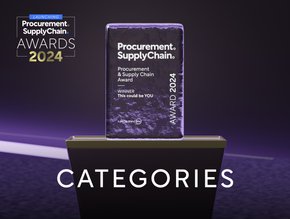Why digital platforms are a procurement & SC game changer

In recent years, disruption has become “the new normal”. That is a real problem because global supply chains, built on a ‘just-in-time’ philosophy and with a long-standing focus on cost and time savings, have revealed themselves to be extremely fragile, and procurement and supply chain leaders have to adapt.
After 30 years of trying to make the global supply chain as lean as possible, the case for savings and just-in-time strategies no longer stands.
With complexities ranging from the pandemic and the war in Ukraine to raw materials shortages, supply chains have come into the spotlight more than ever in the past few years, as have procurement strategies.
The focus is now on juggling a multitude of issues which range from record inflation, radical shifts in demand, declining growth, bloated warehouses with inaccurate inventories, and procurement and supply shortages.
Supply chain and procurement leaders must now review business models and make tough decisions that are cost effective, and which also meet changing customer expectations. To do this, they must concentrate on four essentials:
1. Harness digital platforms
Enterprises today must be adaptive, resilient and able to scale or divert their operations quickly in the face of unforeseen supply chain challenges.
To achieve this, they must “unchain” from dated organisational and technological roadblocks and use technology as an enabler.
To accomplish this, enterprises should look for a modular, integrative, and extensible technology platform.
This platform should embrace what Gartner calls the “composable enterprise” model: a data-driven, end-to-end platform made of composable services, that can be packaged together, or integrated with other software, ERPs or technologies.
Ultimately, a digital platform should allow a step-wise approach to implement new processes without adding additional systems and complexity.
2. Leverage the power of personalisation
In a market filled with countless products and alternatives, businesses must respond to what customers really want to remain competitive. It’s the buying experience, where convenience, personalisation and flexibility are key, that truly gives value to the customer.
Retailers have started adopting new fulfilment models and are offering more delivery/pickup options, such as home delivery, click-and-collect and drive-through models.
They are also considering predictive technology and forecasting models so they can adapt quickly to customer demand.
Traditional one-size-fits-all technologies fail to support these customer expectations.
To leverage an omnichannel model, retailers need to build an ecosystem of partners and suppliers, enabled by an agile supply chain digital platform.
3. Automate and implement smart working models
High labour costs and talent shortages are forcing companies to seek flexible automation solutions and integrate smart technologies.
These can eliminate the need to deploy human resources to complete low-value but time-intensive tasks such as manual data entry. As a result, their capacity is freed up to focus on higher value-add responsibilities leading to greater business productivity, performance and profitability.
In this context, digital platforms act as a stepping-stone to enable a continuous evolution path, allowing organisations to integrate innovative technologies to help them achieve their digital roadmap objectives.
Ultimately, this connectivity facilitates organisations to optimise their supply chains and redefine new business strategies.
4. Establish a control tower for supply chain visibility
Disruption is often sudden and unexpected. Companies must act quickly to mitigate critical issues, shortages and delays to minimise impact on the business.
Compared to a traditional supply chain, a digitally-enabled one provides far greater visibility into all elements and stages so companies can gain real-time visibility into supplier performance and identify gaps that may cause disruptions and address them in advance.
In traditional supply chains, identifying potential risks and forecasting their likely effects can be complex, laborious, and inaccurate.
In a digital supply chain, up-to-date quality and control data allows companies to foresee issues and take action immediately before the problem worsens.
Digitally transforming supply chains can generate benefits in automation, speed, collaboration, cost reduction and connectivity.
It can also eliminate inefficient business silos, improve business-decision making and unlock value for all stakeholders involved in the supply chain.
Ultimately, embracing a digital platform is vital to build an agile, flexible, and resilient supply chain that can react quickly to problems or, better still, forecast uncertainty well in advance.
To read case studies showcasing how Logistics Reply can boost your supply chain, click here.
- o9 and Resilinc: Increasing Visibility in Supply ChainsSupply Chain Management
- Top 100 Women 2024: Jennifer Moceri, Google – No. 1Procurement Strategy
- P&SC LIVE New York: Peter Sharoff Procurement SpecialistTechnology & AI
- McKinsey: The Power of Generative AI in ProcurementTechnology & AI






